A visitor looks out towards the Giza pyramid complex at the world’s largest archeological museum, which is slated to fully open this summer outside of Cairo
Photograph: Khaled Desouki/AFP/Getty Images
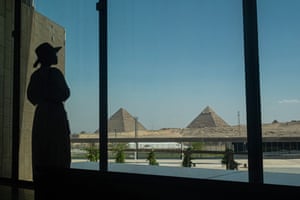
Sprawling about 500,000 square meters, equivalent to about 70 soccer fields, it is the world’s largest museum dedicated to a single civilization
Photograph: Tamer Adel/Alamy
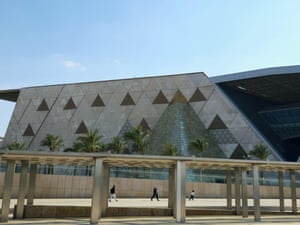
A statue of Pharaoh Ramesses II in the museum’s main hall. Egypt’s longtime ruler Hosni Mubarak first proposed the museum in 1992, and construction on the project began in 2005
Photograph: Fadel Dawod/Getty Images
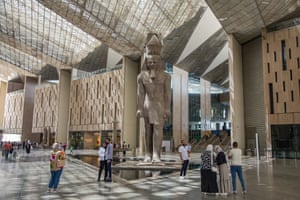
After years of delays due to political unrest and the Covid-19 pandemic, parts of the museum opened in 2023 to limited tours
Photograph: Tamer Adel/Alamy
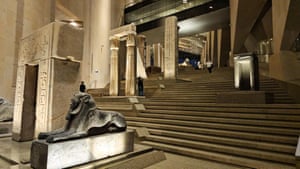
The museum’s grand opening is slated for 3 July 2025
Photograph: Robin Jerstad/Alamy
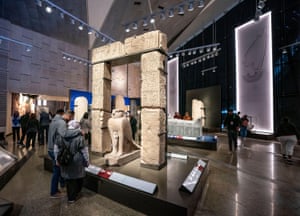
Officials have said they expect the museum to draw 5 million visitors a year
Photograph: Robin Jerstad/Alamy

Photograph: Fadel Dawod/Getty Images
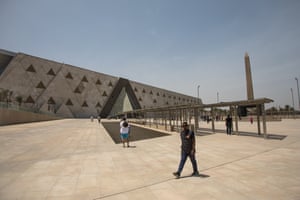
The top of the main building is level with the Giza pyramids
Photograph: GEM
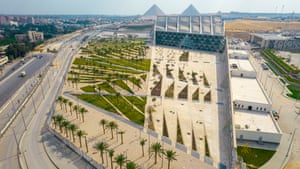
The building’s facade pays tribute to the nearby pyramids and is made of translucent alabaster stone
Photograph: Tamer Adel/Alamy
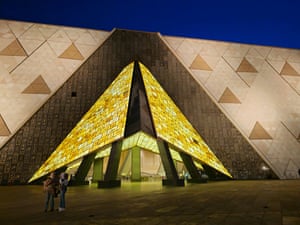
The original Egyptian Museum, in Cairo’s Tahrir Square, will continue to operate
Photograph: robertharding/Alamy
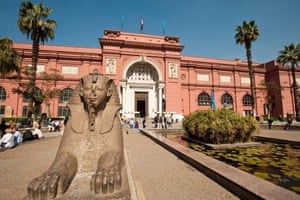
However, many of its artifacts, including those from the reign of Tutankhamun, have been or will be relocated to the new museum
Photograph: Khaled Desouki/AFP/Getty Images

The final transportation and installation of a granite statue of Ramesses II in 2018. Officials spent years assembling the museum’s collection
Photograph: Barry Iverson/Alamy

Today the statue presides over the museum’s main hall
Photograph: Sayed Hassan/Getty Images
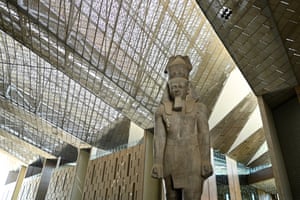
Designers say the building’s climate-smart designs – which include a reflective roof, external shading and resource-efficient lighting – help it save more than 60% in energy costs and reduce water use by a third
Photograph: David Ribeiro/Alamy
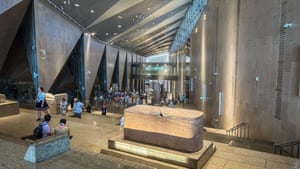
An Egyptian archeologist works next to the gilded coffin of King Tutankhamun, which underwent an eight-month restoration process, the first since the tomb was discovered in 1922. About 150 conservators and researchers work on-site restoring and studying artefacts. Many of the artefacts on display are being shown to the public for the first time
Photograph: Mohamed Hossam/EPA
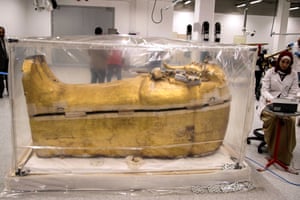

 3 hours ago
4
3 hours ago
4













































